Etude de bruit de fond induit par les muons dans l'expérience ...
Etude de bruit de fond induit par les muons dans l'expérience ...
Etude de bruit de fond induit par les muons dans l'expérience ...
Create successful ePaper yourself
Turn your PDF publications into a flip-book with our unique Google optimized e-Paper software.
tel-00724955, version 1 - 23 Aug 2012<br />
4 Muon <strong>de</strong>tection<br />
Contents<br />
4.1 Muon veto conventions<br />
4.2 Life time of the muon veto<br />
4.3 Muon rate<br />
4.4 Mean muon energy <strong>de</strong>posit per module<br />
4.5 Tracking muon candidates<br />
Who or<strong>de</strong>red that?<br />
I. I. Rabi.<br />
Muons are the only component of the primary cosmic ray interactions in the atmosphere<br />
that survives un<strong>de</strong>rground beyond the ∼ 10 mwe scale. And though<br />
there is a reduction of the cosmic muon flux by the rock overbur<strong>de</strong>n in LSM and<br />
equivalent laboratories of more than 106 com<strong>par</strong>ed to sea level, neutrons produced<br />
in <strong>de</strong>ep inelastic scattering (DIS) of cosmic <strong>muons</strong> are the most prominent background<br />
in the upcoming second generation experiments searching directly for Dark<br />
Matter. The i<strong>de</strong>ntification of <strong>muons</strong> in the vicinity of the Germanium <strong>de</strong>tectors allows<br />
a significant suppression of this background source and hence an improvement<br />
in the experimental sensitivity.<br />
The muon veto consists of 42 plastic scintillator modu<strong>les</strong>, read out at both ends<br />
with an electronics and a data read-out fully in<strong>de</strong>pen<strong>de</strong>nt from the bolometer system,<br />
except for a fiber connection transferring the overall experiment synchronization as<br />
well as some restricted information about muon hits, as <strong>de</strong>tailed in Section 3.3. The<br />
muon veto is the extreme outsi<strong>de</strong> layer of EDELWEISS-II, surrounding almost hermetically<br />
the experimental setup with a total surface of ∼ 100 m2 , see Figures 3.10<br />
and 3.11, page 69. The muon veto has been installed since May 2005 at the un<strong>de</strong>rground<br />
laboratory LSM in Modane, ready for data taking since September 2005 and<br />
stable in terms of long term measuring conditions since July 2006.<br />
4.1 Muon veto conventions<br />
The muon veto registers two kinds of data fi<strong>les</strong>: The scaler fi<strong>les</strong> ma<strong>de</strong> of raw data<br />
and the event data file.<br />
The raw data from the scaler cards correspond to any signal collected by the<br />
photomultipliers at the end of a si<strong>de</strong> of a module and above the threshold of the<br />
discriminator cards. It is the number of hits per channel per 15 min, with no other<br />
information. They are used to monitor the system, cf. Section 3.3.3. With a rate<br />
81<br />
4


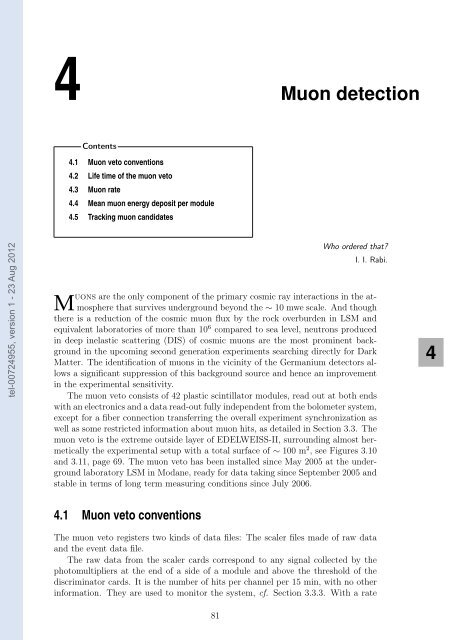

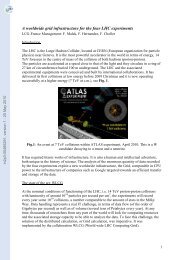

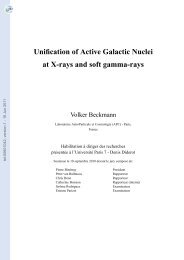

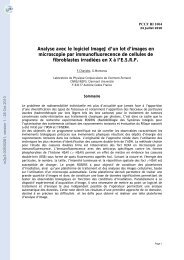
![[in2p3-00383985, v1] NUCLEAR PHYSICS at GANIL ... - HAL - IN2P3](https://img.yumpu.com/19016755/1/185x260/in2p3-00383985-v1-nuclear-physics-at-ganil-hal-in2p3.jpg?quality=85)
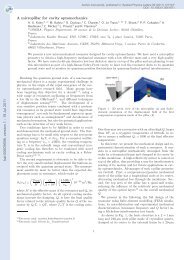
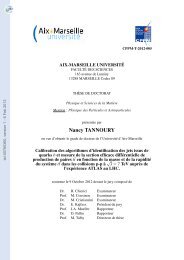
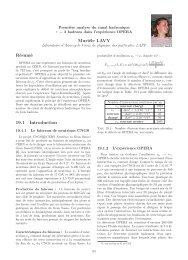
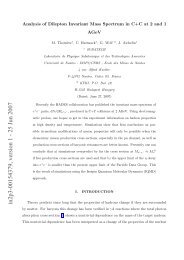
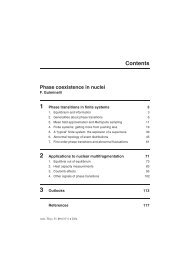
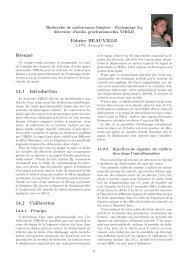
![[tel-00752304, v1] Pions réels et virtuels dans les noyaux](https://img.yumpu.com/19016523/1/184x260/tel-00752304-v1-pions-reels-et-virtuels-dans-les-noyaux.jpg?quality=85)